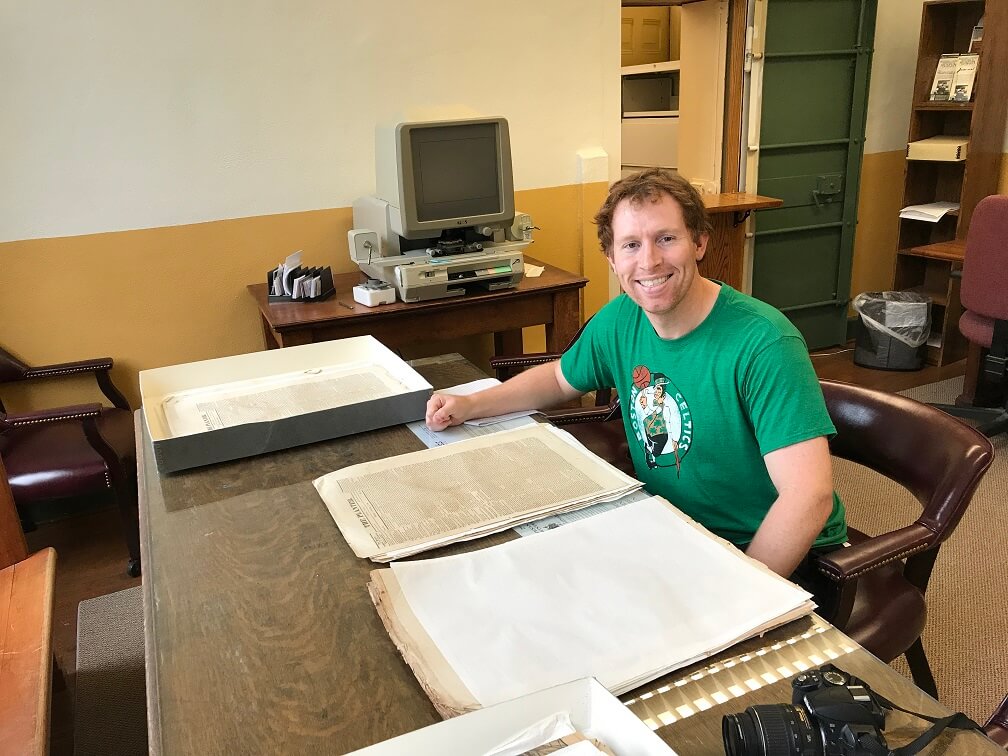
By James Pylant
Copyright © 2021 | Posted 28 May 2021
All Rights Reserved. Do not post or publish without written permission.
Return to Features
The mission of the Lone Star Slavery Project (LSSP) is to tell the story of enslaved Texans through public and archival records. An endeavor of Stephen F. Austin State University in Nacogdoches, it focuses on 18 counties that accounted for 38 percent of Texas’s enslaved population in 1860. The project’s website went live in April 2020. Currently, it documents 2,300 Nacogdoches and Angelina County enslaved people, with digitized images identifying them by name.
“We’re documenting as many as possible but realizing there’s going to be a certain percentage (maybe 20 to 40 percent, depending on the county) where there’s not going to be any record,” says project director Kyle Ainsworth. “If the enslaver didn’t die before 1865, or their finances were solvent and they didn’t have to sell or mortgage their enslaved people, there’s no county records for them or their bondspeople,” he explains.
“There might not be records for that enslaved person other than the 1850 and 1860 slave schedules, but even these records can be difficult to verify because the census-takers did not record the names of the enslaved, just their enslaver, gender and age,” he adds.
Ainsworth is also project director of the Texas Runaway Slave Project, his main research effort for almost seven years. While the Texas Runaway Slave Project is primarily sourced from historical newspapers, the LSSP is drawn from county records such as deeds and probates. It concentrates on documenting the overwhelming number of original materials available before delving into published sources.
One of the more detailed accounts discovered involved a Nacogdoches enslaver who mortgaged those he held in bondage every year from 1849 to 1860. And similarly, in a probate case, an administrator hired out the estate’s enslaved every year from 1859 to 1865. In both instances, descendants could find their ancestor in practically a year-by-year update.
Data is entered into a spreadsheet that includes name, age, associated year, complexion, valuation, enslaver’s name and location, and previous enslaver’s name and location. This information is cross-referenced by county and source materials to limit the repetition of individuals. Fields in the database also cross-reference family members so that researchers can connect them together even after they are separated by sale or gift.
Last year Ainsworth applied for a National Endowment for the Humanities grant with the purpose of hiring 10 Stephen F. Austin students per year from 2021 to 2024. These students would do original research in 18 counties that were within a two-hour radius of Nacogdoches. CBS News filmed a segment about the LSSP in early March. “At that point I was still in the running for the grant,” said Ainsworth. But in mid-April he learned that he would not receive that funding.
“I can either modify the grant submission and reapply or reach out and try to build partnerships with county clerks and county historical commissions or do nothing and keep chipping away on my own. All are viable options at this point.” That uncertainty makes it hard to predict when other counties will become available. “Right now, the team consists of just me,” says Ainsworth. “It’s something I’m passionate about, but it’s not my full-time job.”
“Next year there might be another county or two and 6,000 total slaves,” he says. In another year, the total might reach 10,000. He envisions that a decade from now, the project might identify more than 50,000 of the enslaved documented in 20 to 30 Texas counties. The scope of LSSP research is enslaved Texans, but there is interest to expand the website in the future to include materials that connect slavery to freedom.
While the LSSP is unable to provide genealogical research, its website is freely accessible for searching.

Kyle Ainsworth of the Lone Star Slavery Project at Stephen F. Austin State University
